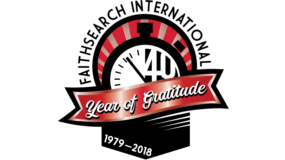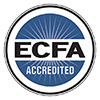Eastern religions like Hinduism and Buddhism do not put the same emphasis on textual studies that we do in the West. Truth, for them, is not measured so much by a historically reliable record (or person) as it is in religious authority or experience. They feel that if it “works” to create a spiritual experience or if it has a long-standing tradition, then it is valid. The history of their sacred books as measured by early, numerous and accurate texts is not important to them. As a result, they are not concerned by having very few texts to work with if asked to document authorship, integrity or historical reliability.
On the other hand, Muslims claim that their Qur’an has more integrity and is more reliable than the New Testament. They point out that they have only one version of their holy book and everyone’s copy is identical to what God dictated to Muhammad in the seventh century A.D.
However, that is not the complete story. They either don’t know or don’t tell that within twenty years of Muhammad’s death the Qur’an had suffered from such a large collection of variants that it necessitated the Orthmanic revision. “In fact, there are still seven ways to read the text (vocalization and punctuation) all based on Orthman’s recension” (Norman L. Geisler and William E. Nix, A General Introduction to the Bible [Moody Press, 1986], p.475). There also is intolerance among Muslims toward scholarly textual criticism. The Qur’an must not be subjected to any form of criticism—any questioning of it is considered heresy (Stephen Neill, Christian Faith & Other Faiths [InterVarsity Press, 1984], pp.57-90). Until recently, all early variant Qur’an texts had been lost or intentionally destroyed so that there was no way to determine how the current Qur’an compares to the original text (which has never been found).
A large cache of early manuscripts has recently been found but not yet published. Early indications are that, as would be expected, there are textual variations. If this is true, then the current Qur’an is not the only version (as Muslims allege) and it must be subjected to the same textual studies as the New Testament or any other ancient document. Until that is done, there is no way to determine its integrity and historical reliability based on textual and external evidence.
Finally, the Mormons claim that their holy book, written by Joseph Smith, the Book of Mormon, has integrity and is reliable. They point out that this is a record of Jesus when he visited the Americas. There are similarities to the New Testament Gospels, for example, the names of people, cities, and geographic features like rivers and mountains. But unlike the biblical Gospels, when you try to find any external evidence for them in the archaeology and history of the Americas—they are nowhere to be found! Rather than being supported by the external evidence—the Book of Mormon is refuted by it. It is more consistent with the evidence to classify this book as mythology.
No matter which religions or religious literature you compare, the New Testament emerges as unique in its depth of evidence for integrity and historical reliability.


